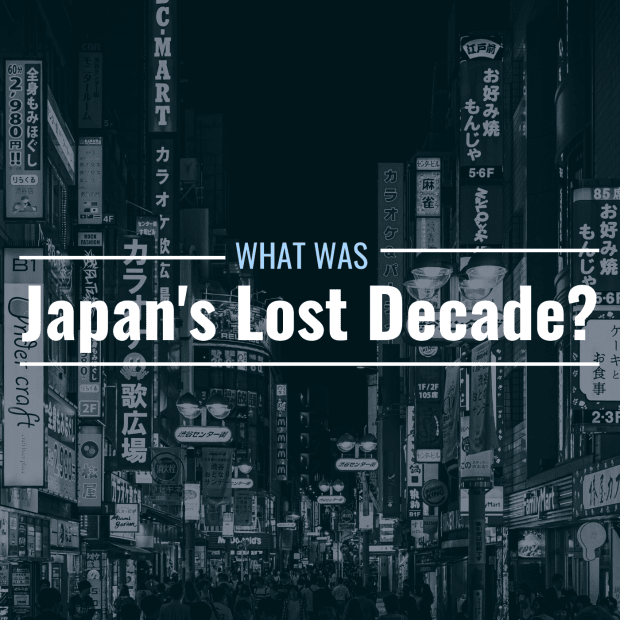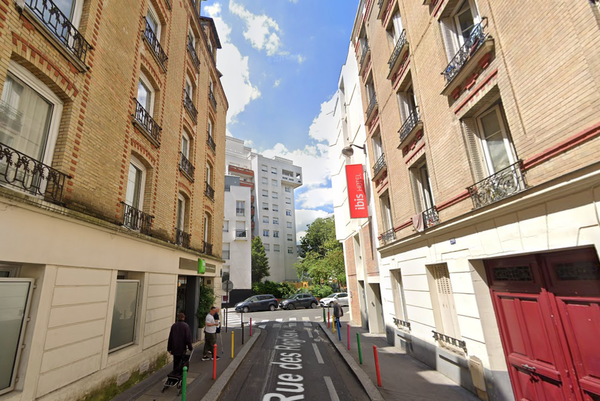
Aleksandar Pasaricfrom Pexels; Canva
What Was Japan’s Lost Decade?
Between 1991 and 2001, Japan’s once red-hot economy was in trouble. An asset bubble had formed in both its housing and stock markets, and when the Bank of Japan implemented a series of steep interest rate hikes as a way to tame inflationary pressures, you could almost hear the bubble pop.
Japan’s stock market tanked, and asset prices fell. Several big banks, which were overleveraged with speculative investments, either failed outright or needed to be bailed out by the government. Businesses folded, and unemployment rose. Japan became mired in a decade-long recession.
The country was actually experiencing a liquidity trap: It seemed like everything Japan’s central bank did to help didn’t work. Interest rates were cut, but fearful for the future, Japan’s citizens sat on their savings instead of spending them.
The government tried instituting large-scale public works projects, similar to what U.S. President Franklin Roosevelt implemented during the Great Depression, but that only increased Japan’s budget deficit. Finally, its central bank injected huge supplies of yen into the markets through quantitative easing, which lasted for five years. This, along with the resultant inflation, effectively got Japan’s citizens spending again, and the country began a slow recovery.
What Caused Japan’s Lost Decade?
The poster child of 20th-century economic growth, Japan had transformed itself from a largely agricultural nation in the 1960s to the world’s second-largest economy by the 1980s. Japan had figured out ways to make high-quality products cheaply, and these products found their way all over the world.
People sported Sony Walkmans on the street and drove Japanese cars around town. Kids watched Japanese cartoons on Japanese-made televisions. Movies like Shogun dominated the box office, and corporate success manuals extolled the virtues of “Japan, Inc.” Everyone wanted to know Japan’s secret.
A lot of it had to do with how Japan’s businesses were structured. They followed the traditional concept of the keiretsu, a close-knit network of business interests centered around a main bank. These groups took majority shareholder interests in one another instead of being financed through stocks or bonds, and as such, this “socially controlled” investment provided the perfect conditions to nurture, test, and perfect new ideas before they were brought to the larger market.
One well-known keiretsu is the Mitsubishi Group, composed of the MUFG Bank, Mitsubishi Electric, Mitsubishi Heavy Industries, and the Mitsubishi Corporation. Together, it employs over 80,000 people in the automotive, energy, chemicals, and food industries—essentially acting as its own supply chain.
Throughout the 1970s and 1980s, the Japanese Ministry of International Trade & Industry allowed easy credit to the keiretsu, in addition to a period of protection from foreign competition, so that their businesses would have time to become cost-effective production powerhouses. Once they gained dominance in their respective industries, the businesses would embark on export programs, which is how Japan’s electronics, computer, automotive, and aircraft industries grew so quickly.
Growing hand-in-hand with Japan’s successful businesses was a booming stock market. The Nikkei Stock Average hit an all-time high of 38,916 on December 29, 1989. In addition, real estate grew incredibly valuable—commercial land prices rose over 300% between 1985 and 1991, and it was said that one square mile in Tokyo’s government center was worth more than the entire state of California. A bubble had formed; that was plain to see.
As asset prices grew, so did speculation, particularly in real estate, which was financed largely by corporate stock profits. Banks were lending and not looking twice. Sometimes, collateral was not even required.
Depositors thought they were in safe hands because Japan’s banks were backed by the government, and in turn, the banks believed the government wouldn’t let them fail, so they bundled these deposits into packages of ever-higher rates of interest and risk, and sold them to speculators.
Worried about inflationary pressures, and attempting to quell the bubble, the Bank of Japan began a series of steep interest rate increases from 2.5% to 4.25% at the end of 1989, and then to 6% in 1990. But since rising rates made borrowing more expensive, speculators quickly defaulted on their investments.
Several of Japan’s biggest keiretsu banks began to fail, threatening to take entire industries down with them. The stock market nosedived. By December 1990—just one year from its all-time height—the Nikkei had lost over 43% of its value.
What Happened During Japan’s Lost Decade?
Between 1991 and 2001, Japan’s economy entered a deep recession. GDP declined, and borrowers became insolvent. Big banks failed, including the Hokkaido Takushoku Bank, the Long-Term Credit Bank of Japan, and Nippon Credit Bank. The days of easy credit from banking networks were long gone, and to a large effect, the keiretsu unraveled.
Some businesses went under; in others, production simply slowed, but they lost their competitive edge as a result. The country, which once had guaranteed employment for life, now struggled with unemployment—which affected recent grads and young workers most significantly.
Consumer confidence plummeted, demand declined, and deflation took hold—it was a dangerous mix.
How Did Japan Recover From Its Lost Decade?
It seemed like everything Japan’s central bank tried to do to help didn’t work: Interest rates were slashed to zero, and kept there for a very long time; still, the recession continued. Land prices dropped 15% in some of Japan’s largest cities, which meant that homeowners owed more than their homes were worth.
The Japanese government tried to instill confidence through large-scale stimulus packages. It built new roads and bridges, even when they weren’t completely necessary, and by doing so, created new jobs. These efforts helped boost the economy, but it wasn’t enough to lift it out of the malaise—in fact, they just added to the country’s deficit in the long run.
What finally helped was the quantitative easing program Japan’s central bank began in 2001, which would last until 2006. By 2003, GDP reached a healthy 2% clip, and exports grew once again, due in large part to China’s emergence into the global marketplace, since many of China’s products depended on Japanese parts.
What Lessons Can Other Economies Learn from Japan’s Lost Decade?
The 2007–2008 Financial Crisis had shades of Japan’s Lost Decade written all over it: This time, the asset bubble was created by the U.S. housing market, fueled by toxic subprime mortgages. When the Federal Reserve began a series of interest rate hikes, many subprime borrowers, whose loans were tied to adjustable-rate mortgages, quickly saw their monthly bills shoot up, and millions of homeowners defaulted as a result.
Banks had made profits by pooling these loans into mortgage-backed securities, which were traded by investment banks around the world, and as the mortgages imploded, a series of dominoes began to fall, which affected investors up the ranks of the securities markets: Banks experienced a credit crunch, and investment banks, such as Lehman Brothers, declared insolvency. The crisis affected financial markets around the world and would usher in the Great Recession.
With Ben Bernanke at the helm, the Federal Reserve took notes from past crises and acted swiftly—and by doing so, some say Bernanke helped to avoid deflation and the economic stagnation that had plagued Japan for so long.
The Fed cut the Fed funds rate to 0% for an unprecedented 6-year period between 2008 and 2014. It also implemented a series of quantitative easing measures. The U.S. Congress approved a $700 billion Troubled Asset Relief Program (TARP), which provided emergency aid to banks as well as underwater borrowers. In 2010, the Dodd-Frank Wall Street Reform and Consumer Protection Act was passed, safeguarding consumers from predatory home lenders and limiting banks to the amount of speculative trading they could undertake.
The U.S. economy was jump-started again by the middle of 2009—quite a speedy turnaround compared to Japan’s.







